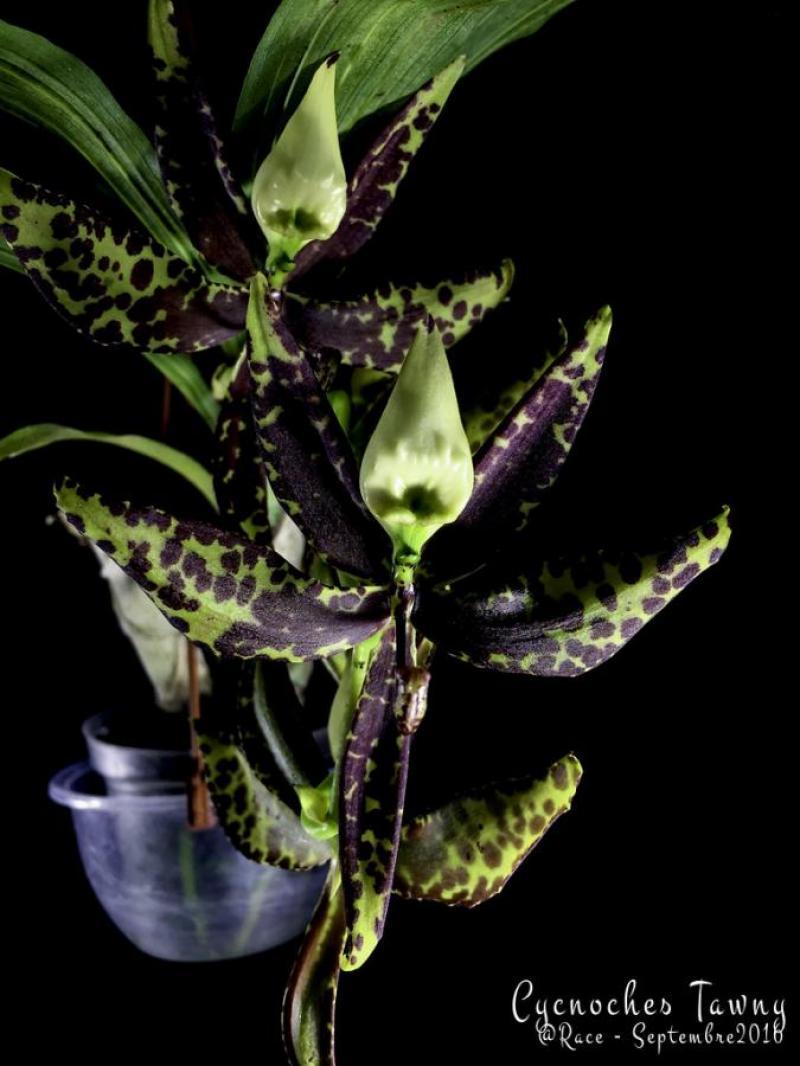Cycnoches egertonianum
Also known as: Egerton's Cycnoches or Cycnoches ventricosum var. egertonianum Cycnoches stelliferum Cycnoches egertonianum var. egertonianum Cycnoches egertonianum var. viride Cycnoches pauciflorum Cycnoches amparoanum Cycnoches densiflorum in the subfamily: Epidendroideae
Native to: Belize Departamento del Huila - Colombia Ecuador Honduras Mexico Nicaragua Panama
General Information
Egerton's Cycnoches is a medium sized hot growing epiphytic orchid belonging to the sub family Epidendroideae native to Belize, Colombia, Ecuador, Honduras, Mexico, Nicaragua, and Panama. It is named after the English Orchid Enthusiast in the 19th century.
Plant Description
Grows to 45cm. Each new growth has numerous arching elliptic leaves that grow to 8-25cm long. Pseudobulbs grow to 3-30cm
Substrate(s)
- Coarse
- Medium
- Bark
- Perlite
Care Notes
This orchid goes into a dormancy phase during winter, during this phase it is best not to provide water unless the plant is starting to look thirsty. The lack of water increases the chance of flowering in spring, and also reduces the likelihood of any rot forming. Do not resume watering until new growth has appeared and is growing strongly.
Often a period of intense growth occurs after dormancy. During this time the amount of light, water and fertiliser the plant receives will directly impact the amount of growth that occurs during this time, and in the case of seedlings, will reduce the time required to reach maturity.
It's recommended to heavily reduce the water amount at the middle to end of autumn to trigger dormancy. Leaves on older bulbs will begin to drop during this time while the newer bulbs continue to mature until terminal leaves appear at the tip of the pseudobulbs.
Repotting can be done any time of the year though it's best to do it in early spring when new growth is appearing as this also means new roots will appear to help the plant anchor into the new media and offset any damage to established roots during the repotting process.
Climate
Grows at low to high elevations. Rainfall ranges from 36mm to 620mm per day, heaviest in November and lightest in March. Humidity ranges from 77% to 89%, highest in November and lowest in March. Temperature ranges from 21C to 28C, highest in May (22C to 28C) and lowest in October (21C to 26C).
Fertiliser
dormant-medium-demand-orchid Use balanced fertiliser during Spring and Summer. Apply fertiliser regularly at half strength year round. Use a high Nitrogen fertiliser during Spring and Summer. Use a high Phosphorous fertiliser during Summer.
Potting
Due to the growth nature of these plants they are best mounted onto cork, tree fern slabs, or even trees if the climate suits. Water regularly especially in hot weather.
Use water retentive media such as moss to prevent roots from drying out quickly This plant does very well in baskets or suspended pots This plant does well mounted to Cork slabs. Repotting is best done annually.




